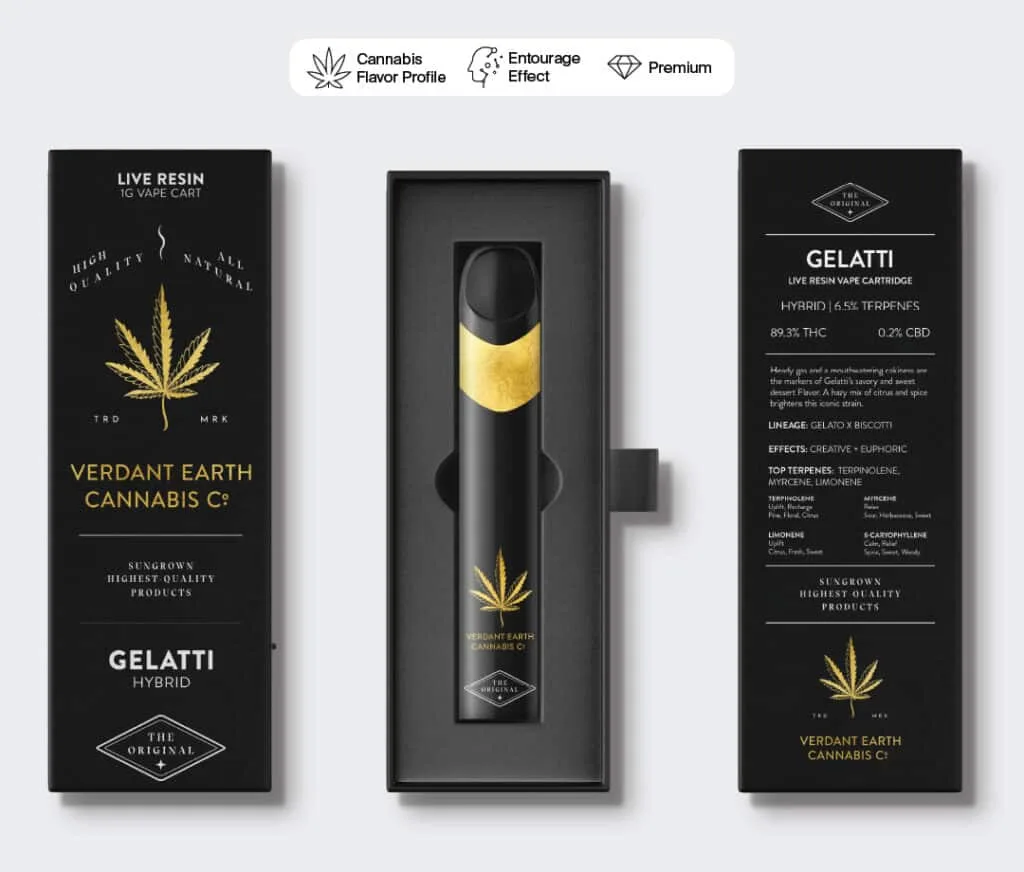June 21, 2023
Myrcene Terpenes

A Guide to the Effects, Benefits, and Uses
Beta myrcene terpene is one of the most common monoterpenes found in the cannabis plant. Most commercially available cannabis strains, both indica and sativa, include myrcene in their terpene profile. However, myrcene is also prevalent in a range of other products, from craft beers to household cleaning products. Learn more about this distinct terpene, its applications, and potential benefits in this guide from True Terpenes.
Understanding Terpenes
Terpenes are the scientific term for the naturally occurring aromatic compounds found in herbs, flowers, and fruits. In nature, terpenes serve many functions – their aromas can help attract pollinators like bees, as well as deter predators. While you may not have heard the word terpenes before, you’re surely familiar with the strong smell of freshly cut flowers or culinary herbs.
Each strain of cannabis has a terpene profile, a unique mix of compounds that affect how the plant looks, smells, and tastes. A cannabis plant can contain more than 200 terpenes. In addition to myrcene, some common terpenes are:
- Limonene: This terpene is prevalent in citrus fruits.
- Linalool: This is the primary compound that gives lavender its strong scent.
- Pinene: This terpene, as its name suggests, is found in conifers like firs and pines.
- Beta-caryophyllene: Found in rosemary and cloves, this terpene is widely used in essential oils.
Terpenes are just one type of active compound in the cannabis plant, which also contains cannabinoids and flavonoids. While terpenes dictate aroma, flavonoids affect a strain’s color, flavor, and antioxidant properties. Cannabinoids like cannabidiol (CBD) and tetrahydrocannabinol (THC) create the psychoactive and therapeutic benefits of cannabis.
Cannabinoids interact with the body’s endocannabinoid system, a network of receptors linked to the central nervous system. When a person smokes cannabis or consumes edibles, the THC in the cannabis binds to their endocannabinoid receptors.
Terpenes, flavonoids, and cannabinoids work together in what is known as the “entourage effect.” While more research is needed into this phenomenon, it is thought that different combinations of compounds produce unique effects. When used in synergy, terpenes and cannabinoids have a stronger effect than each would achieve on their own. This may be why different strains of cannabis with the same levels of THC can produce different effects, depending on their distinct terpene profiles.
Myrcene Smell and Taste
Myrcene, often listed as β-myrcene, is a type of monoterpene, a compound that has a simple chemical structure. Although it is a building block for more complex terpenes, it has its own unique aroma and flavor.
What Does Myrcene Smell Like?
Myrcene’s scent has been characterized as earthy, fruity, and clove-like. You may see cannabis cultivars high in myrcene described as having sensory notes that are funky or musky.
What Does Myrcene Taste Like?
The flavor of myrcene is sweet with peppery or slightly spicy notes. Often, this terpene is associated with mangoes, a fruit that contains high levels of myrcene.
Myrcene Terpene Effects
Myrcene has long been used in folk and herbal medicine preparations because of its sedative effects. For example, some cultures use lemongrass tea to help with anxiety or sleeplessness. It may also help reduce inflammation and have analgesic properties. As the most abundant terpene in many strains, some cannabis users associate high doses of myrcene with the “couch lock” phenomenon – an overwhelming feeling of relaxation or sedation that some people experience after smoking, vaping, or consuming edibles.
The Benefits of Myrcene
Research shows that myrcene may offer a wide range of health benefits. Because of the entourage effect, different strains of cannabis can have varying effects on users. However, myrcene may help with:
- Sleep issues: Myrcene can have a calming effect, helping a user fall and stay asleep.
- Chronic pain: With its anti-inflammatory and analgesic properties, myrcene may help with issues like osteoarthritis.
- Aging: Myrcene may help protect the skin against damage from harmful ultraviolet (UV) rays.
- Relaxation: Myrcene works as a natural muscle relaxant and sedative, producing a calming effect on the user.
Additionally, initial research shows that some terpenes, including myrcene, can slow or inhibit tumor growth. One study found that myrcene could help destroy lung cancer cells. Most scientific research into myrcene has been conducted on animals, not people, so there is much more to learn about the effects of these powerful compounds on humans.
Myrcene Uses
Myrcene is found in many commercial cannabis strains, including Green Crack, OG Kush, and Grand Daddy Purple (GDP). Beyond its use in smoking and vaping, myrcene is common in:
- Beer brewing: Hops are rich in myrcene. If you’ve ever tried an IPA or another type of hoppy beer, you’ve probably noticed the distinct balsam-like, slightly citrusy smell of this terpene.
- Aromatherapy: Terpenes such as myrcene are an important component of essential oils. You’ll find myrcene in scented lotions, bath products, and scent diffusers, as well as cleaning products.
Where Else Do You Find Myrcene?
In addition to fruits like mango and guava, other plants and herbs that contain the myrcene terpene include:
- Cardamom
- Hops
- Lemongrass
- Thyme
- Verbena
In the cannabis plant, terpenes are primarily found in the trichomes. These are the tiny crystals on the cannabis flower and leaves that might look shiny or sticky.
Find Out More About Myrcene Terpenes
For cutting-edge research into the science of myrcene terpenes, turn to True Terpenes. Our Science Board is dedicated to studying the field of phytomedicine, the medical potential of terpenes, and the entourage effect. Based in Oregon and serving customers throughout the United States and beyond, True Terpenes designs, manufactures, and distributes terpene isolates and custom blends. Our facilities meet FDA’s Current Good Manufacturing Practice (CGMP) regulations and are ISO-certified (ISO 9001:2015). All of True Terpenes’ products are carefully formulated to meet the highest standards of safety, quality, purity, and chemical stability. To access terpene education and research or learn more about our products, contact us today.




